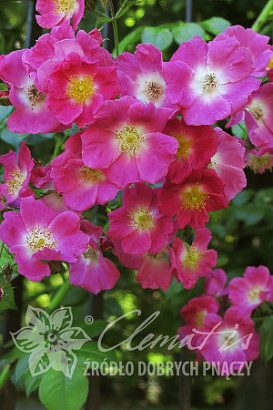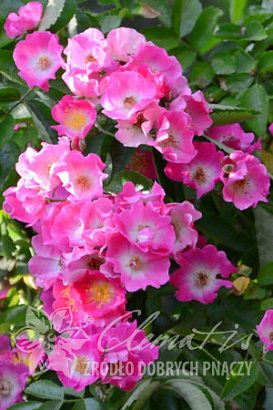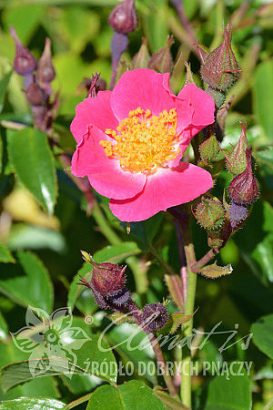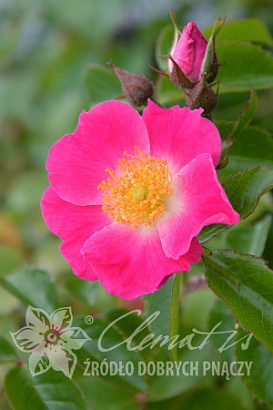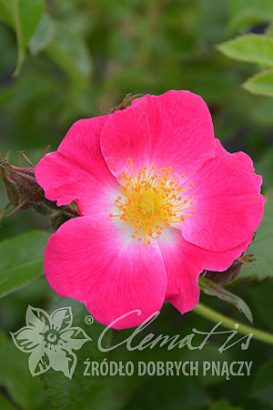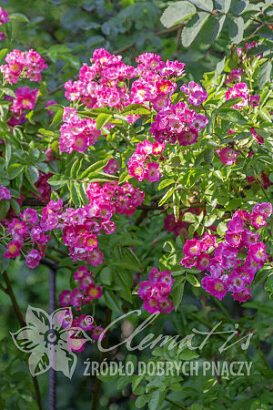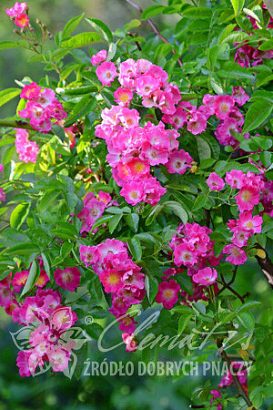Rosa ‘American Pillar’
Climbing rose 'American Pillar'| 装饰形式 | flowers |
|---|---|
| 花色 | pink |
| 植株高度 | 4-5 m |
| 花期 | VI, VII |
| 年增长率 | 1-3 m |
| 种植方位 | sun, 3/4 sun, 1/2 sun |
| 修剪方式 | Zones 5 - 8 |
Free-flowering rose of attractive, bright pink single flowers. A healthy, robust cultivar.
WHAT IT LOOKS LIKE: Flowers 4 cm across, single, of bright pink large petals and yellow stamens; gathered by dozens in inflorescences set on short pedicels. Appear at the end of VI and in VII; delicately scented. The shrub does not repeat blooming but in warm summers fruit may set. Leaves are dark green, glossy, leathery. Shoots long, thick, very thorny.
HOW IT GROWS: A vine that leans against supports rather than climb along them. The cultivar belongs to the Ramblers group. Requires tying up. Strong-growing. The plant height depends on its support – in Poland it reaches 4.5 m (about 3 m a year). The supports should be sufficiently extensive and solid.
WHERE TO PLANT: Requires a sunny or semi-shaded site and fertile, moist but well-drained soil. Tolerates moderately fertile soil, too. Thrives in a ground of slightly acidic or neutral pH. The cultivar is disease resistant and vigorous. Hardy (zone 5–8).
HOW TO PLANT AND MAINTAIN: Before planting immerse the plant container in water for 10-30 min. Place the root ball in a 40 x 40 x 40 cm hole with a 10 cm layer of well-rotten manure or compost, 3-5 cm deeper than it was before. Fill the hole with fertile compost soil. In spring, dead or damaged or frozen shoots should be removed as well as those that are weak and thicken the shrub excessively. Also, the overgrown shoots or those that would develop flowers, should be cut back to the “pencil thickness”. In summer, after the bloom, the flowering shoots are pruned as far as the very base of the plant, along with the oldest and the weakest ones. Formative pruning may be performed also following the bloom, in VII.
HOW TO APPLY: The cultivar is recommended for house gardens, public greenery and parks, both in formal and natural areas. It may be trained along hedges or walls, entrance gates, pergolas and arbours. If grown without supports, it may be a feature in a large rock garden.
ORIGIN: U.S.A. Raised by Walter van Fleet in 1902.

